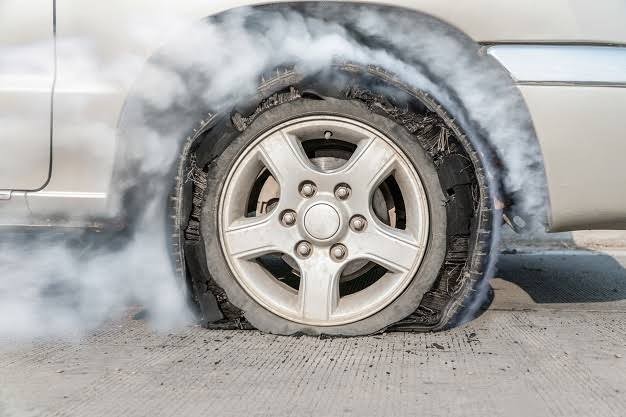When faced with a tyre burst, it can be a daunting experience as it can jeopardize your control over the vehicle and lead to potential accidents or collisions. Therefore, it is crucial to swiftly take appropriate action to ensure your safety and that of others on the road.
Greetings! As an automotive safety expert, I would like to shed light on the phenomenon of a tyre burst, which occurs when there is a sudden loss of air pressure in a tyre, potentially causing it to deflate and separate from the rim. These tyre bursts can transpire regardless of your speed, but they are more prone to happen when you're driving at high velocities.
Allow me to share some essential steps to follow if you encounter a tyre burst while driving:
1. Keep Calm: Maintaining composure is of utmost importance in such situations. It is imperative to remain level-headed and composed as panicking can impede your ability to control the vehicle effectively.
2. Ease Off the Accelerator: Abruptly slamming on the brakes is not advisable as it may cause further loss of control. Instead, gradually release the pressure on the accelerator pedal, allowing the car to decelerate gradually.
3. Firmly Grip the Steering Wheel: A tyre burst can lead to the car pulling to one side. In such cases, it is vital to maintain a firm grip on the steering wheel and counteract the pull by steering in the opposite direction to regain control.
4. Safely Maneuver to the Side: Once you have regained control, it is crucial to safely guide the vehicle to the side of the road and come to a complete stop.
5. Assess the Tyre: After pulling over, carefully inspect the affected tyre. If it is completely deflated, it will require replacement. However, if it is only partially deflated, you might be able to drive to a nearby service station for professional assistance.
To avoid encountering tyre bursts, let's explore some preventive measures you can take:
- Maintain Optimal Tyre Pressure: Ensure that your tyres are inflated to the recommended pressure. Both underinflated and overinflated tyres are susceptible to bursting. Regularly monitor and adjust tyre pressure accordingly.
- Conduct Regular Tyre Inspections: Routinely examine your tyres for any signs of damage such as cracks, bulges, or tears. Should you identify any issues, promptly arrange for tyre repairs or replacements.
- Exercise Caution around Sharp Objects: Be attentive while driving to avoid encountering sharp objects like nails or screws on the road. If you accidentally drive over such objects, immediately pull over to a safe location and thoroughly inspect your tyres for any possible damage.
By adhering to these recommendations, you can significantly reduce the likelihood of experiencing a tyre burst, thereby enhancing safety during your journeys.
In addition to the core guidelines mentioned above, here are some supplementary tips to ensure your safety in the event of a tyre burst:
- Communicate with Passengers: If there are passengers in your vehicle, calmly inform them about the situation and provide clear instructions on what to do.
- Activate Hazard Lights at Night: During nighttime driving, promptly activate your hazard lights to alert other drivers of the unexpected situation.
- Seek a Safe Spot in Populated Areas: When driving in areas with heavy traffic, endeavor to pull over to the side of the road, ensuring a safe distance from other vehicles.
- Stay Inside the Car in Remote Areas: In more isolated or desolate regions, it is generally advisable to remain inside your vehicle until professional help arrives.
Let's now explore some common causes of tyre bursts:
- Punctures from sharp objects
- Overinflation
- Underinflation
- Defects in the tyre
- Improper wheel alignment
- Worn or damaged tyres
Tips for preventing tyre bursts:
- Inspect your tyres regularly for signs of damage.
- Maintain proper tyre pressure.
- Avoid driving over sharp objects.
- Get your tyres rotated and balanced regularly.
- Replace your tyres when they are worn out.
By following these tips, you can help prevent tyre bursts and stay safe on the road.

Comments (0)
Please login to join the discussion
Be the first to comment on this article!
Share your thoughts and start the discussion